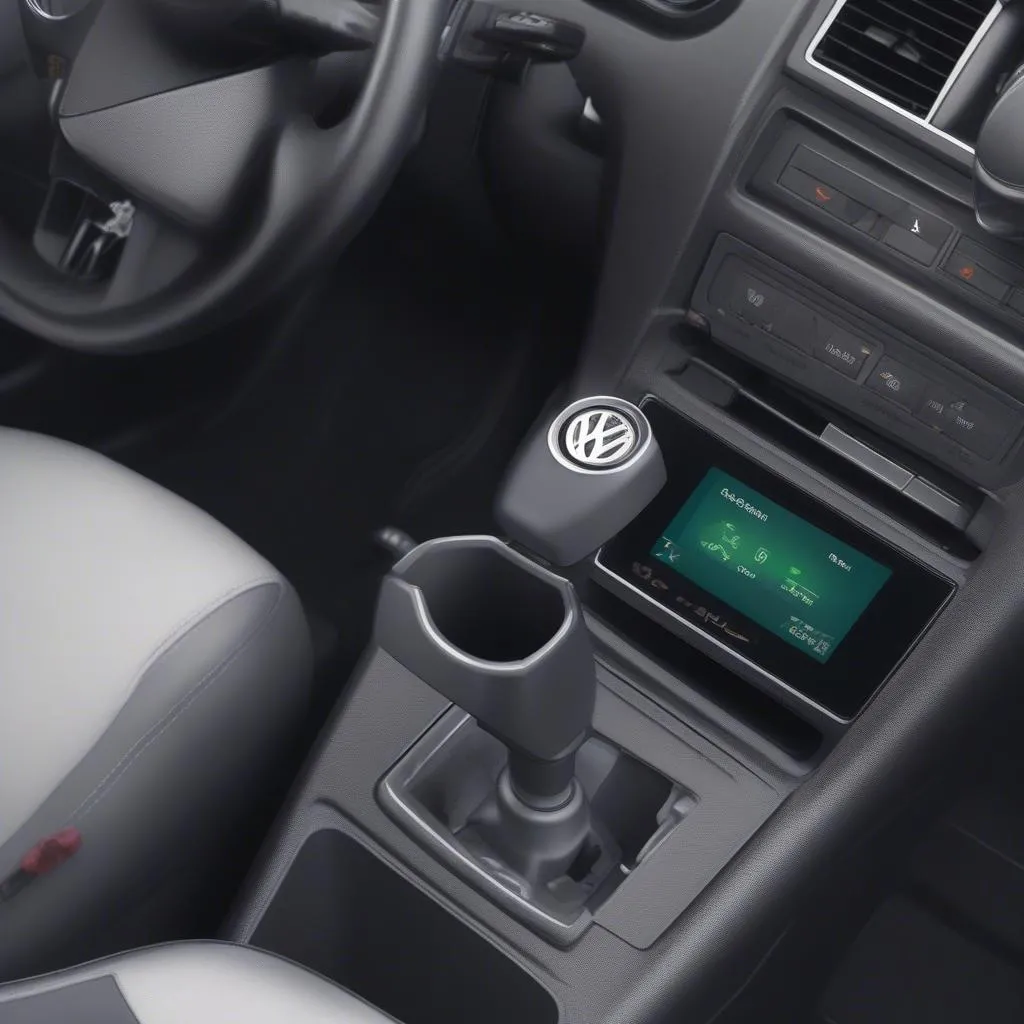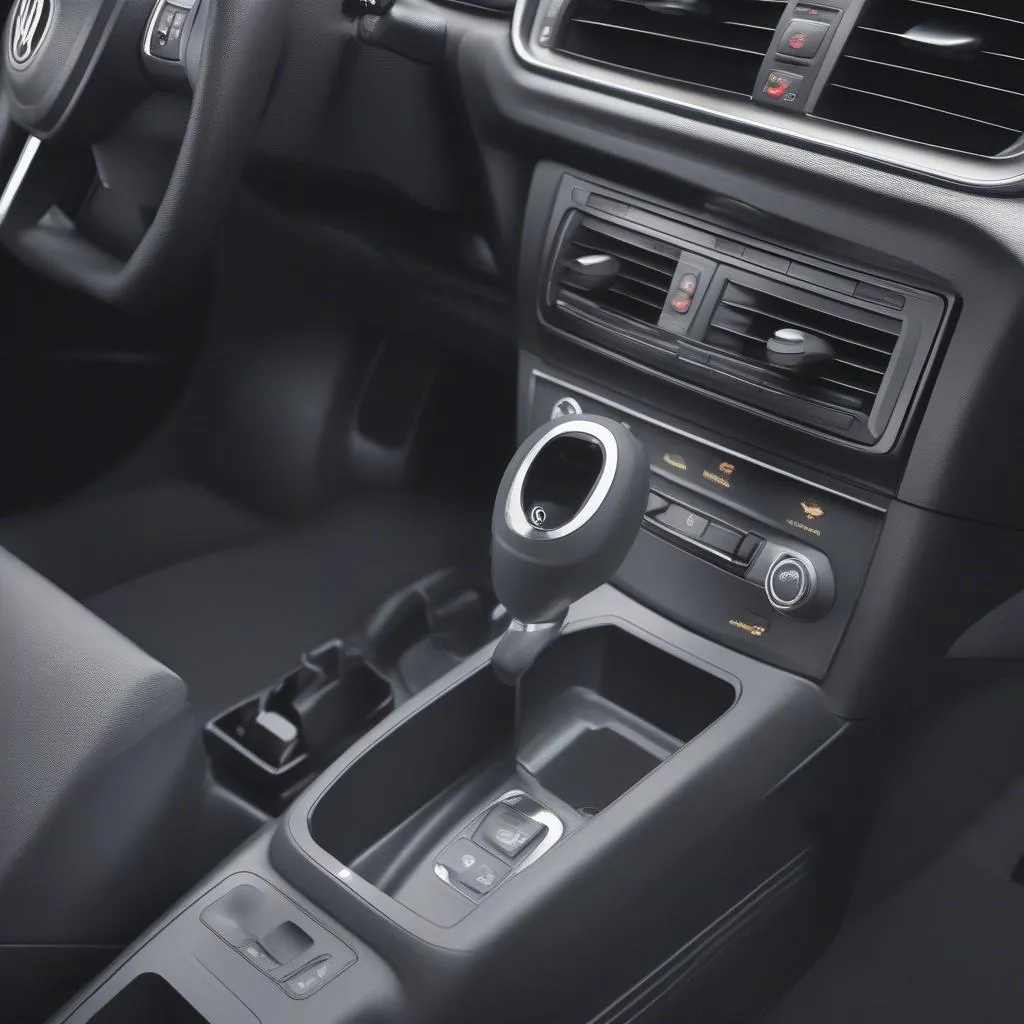Imagine this: you’re driving your beloved VW Golf, enjoying the open road, when suddenly the engine starts sputtering and the dashboard lights up like a Christmas tree. Your heart sinks – what could be wrong? Before you panic, remember that most modern cars have a built-in diagnostic system that can provide valuable insights into what’s going on. This is where the OBD port, or On-Board Diagnostics port, comes in. It’s the key to accessing this wealth of information and potentially saving you a lot of time and money in the long run.
What is an OBD Port and Why is it Important for VW Golf Owners?
The OBD port is a standardized connector found in most vehicles manufactured after 1996. It’s essentially a gateway to your car’s computer system, allowing you to access and read diagnostic trouble codes (DTCs). These codes are like secret messages from your car’s computer, explaining what might be wrong with your vehicle.
Why is the OBD Port Important for VW Golf Owners?
- Troubleshooting: If your VW Golf starts acting up, the OBD port is your first line of defense. It allows you to identify potential problems quickly and efficiently.
- Saving Money: By understanding the DTCs, you can often diagnose and fix minor issues yourself, saving you money on expensive repair bills.
- Improving Fuel Efficiency: Many OBD-II scanners can also monitor real-time data, such as fuel consumption and engine performance, helping you drive more efficiently.
Where is the OBD Port Located in a VW Golf?
The OBD port location varies slightly between different VW Golf models, but it’s usually found in a convenient and easily accessible spot.
For most VW Golf models (1996 onwards), you’ll find the OBD port:
- Underneath the dashboard: It’s often located on the driver’s side, near the steering column, or on the lower left side of the dashboard.
- Beneath the center console: Some models may have the port hidden under a small cover, often located near the gear shifter or the handbrake.
Tips for finding your OBD Port:
- Consult your Owner’s Manual: This is the most reliable way to locate your specific car’s OBD port.
- Look for a label: The port is typically labeled “OBD,” “OBD-II,” or “DLC.”
- Use online resources: Many websites and forums offer detailed guides and pictures showcasing OBD port locations for specific VW Golf models.
How to Use an OBD Port with your VW Golf
Once you’ve found the OBD port, you’ll need a compatible scanner to access the diagnostic information. There are a wide variety of scanners available, ranging from basic ones that can read and clear DTCs to more advanced ones that can provide real-time data and even allow you to reprogram your car’s computer.
Here’s a quick overview of how to use an OBD port with your VW Golf:
- Connect the Scanner: Plug the scanner’s cable into the OBD port.
- Turn on the ignition: You don’t need to start the engine, but you should have the ignition turned to the “ON” position.
- Read the DTCs: The scanner will retrieve the DTCs stored in your car’s computer.
- Interpret the DTCs: You can use the scanner’s built-in lookup function or an online database to understand what each DTC means.
- Clear the DTCs: Once you’ve addressed the issue that caused the DTCs, you can use the scanner to clear them from the system.
Popular OBD Scanners for VW Golf:
- Foxwell NT510: This versatile scanner is specifically designed for European vehicles, including VW Golf models. It offers comprehensive diagnostic capabilities, including reading and clearing DTCs, live data monitoring, and coding.
- Launch X431 Pro: A powerful and user-friendly scanner that provides a wide range of diagnostic features. It is known for its comprehensive coverage of VW Golf models.
- Autel MaxiCOM MK808TS: A professional-grade scanner with advanced diagnostic capabilities, including bi-directional control, allowing you to perform more in-depth testing and adjustments.
Common VW Golf OBD Port Problems
Even though the OBD port is a relatively reliable component, it can sometimes encounter issues.
Common Problems:
- Damaged connector: Physical damage, such as a bent pin or corrosion, can prevent a proper connection.
- Loose connection: Over time, the connector can become loose, leading to intermittent issues.
- Circuit problems: Faulty wiring or a short circuit can interrupt the communication between the OBD port and the car’s computer.
Troubleshooting:
- Inspect the connector: Look for any visible damage or loose connections.
- Clean the connector: Use a contact cleaner to remove any dirt or corrosion.
- Check for circuit issues: If you suspect a wiring problem, consult a qualified mechanic for further diagnosis.
Pro Tip: If you’re unsure about how to diagnose or repair any OBD port issues, it’s always best to consult a qualified mechanic for professional assistance.
Conclusion
The OBD port is a valuable tool for VW Golf owners, allowing you to gain insights into your car’s health and potentially save money on repairs. By understanding the OBD port’s location, functionality, and potential problems, you can make informed decisions about your car’s maintenance.
Need help with your VW Golf’s OBD port? Contact us today for expert assistance!
- Whatsapp: +84767531508
Do you have any questions about the OBD port in your VW Golf? Share them in the comments below!
Related Articles:
 OBD Port Location in a VW Golf: Under the Dashboard
OBD Port Location in a VW Golf: Under the Dashboard
 OBD Port Location in a VW Golf: Under the Center Console
OBD Port Location in a VW Golf: Under the Center Console